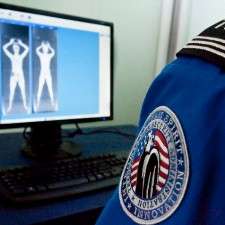Radiation-enabled chips could lead to low-cost security imaging systems

With homeland security on high alert, screening systems to search for concealed weapons are crucial pieces of equipment. But these systems are often prohibitively expensive, putting them out of reach for public spaces such as train and bus stations, stadiums, or malls, where they could be beneficial.
Now Dr. Eran Socher of Tel Aviv University's Faculty of Engineering is reconfiguring existing complementary metal-oxide-semiconductor (CMOS) chips designed for computers and turning them into high frequency circuits. The ultimate goal is to produce chips with radiation capabilities, able to see through packaging and clothing to produce an image of what may be hidden underneath.
Currently being developed through a collaboration between teams at TAU and Frankfurt University, the chip could be the basis of sophisticated but affordable and portable detection technology able to meet everyday security needs. The research has been published in IEEE Microwave and Wireless Components Letters and will be presented at the International Conference on Infrared, Millimeter, and Terahertz Waves in Australia this September.
Big security benefits on a miniaturized scale
Currently, advanced security technology is massive in size and comes with a massive price tag. Such scanning systems are often developed for selected airports or used by NASA for space exploration, says Dr. Socher. "Our concept is different. For everyday use, security technology needs to be both small and cheap," he explains.
By adding new capabilities to existing CMOS technology, already mass-produced for computers and other mobile devices, the researchers are producing new integrated circuits at an affordable price. The chip, which measures a miniature 0.5 mm by 0.5 mm, newly integrates antennae, giving it the ability to receive and transmit millimeter wave or terahertz radiation. When combined with either mechanical or electronic scanning technology, the resulting radiation can produce an image.
Unlike X-ray technology which penetrates the body, the chip is designed to see only through materials such envelopes, clothing, or luggage, stopping at the human skin. Because the chip works with radiation levels that are lower than those of a cell phone, it circumvents health concerns. And the chip can also produce a more accurate depiction of concealed objects, an advantage over common metal detectors which aren't very specific or sensitive, says Dr. Socher.
Facilitating high-speed transfers
Another application for the chips, which have a range of only a few meters but operate at high frequencies, is high-speed communications. The data rate can range from 1 to ten gigabytes per second, explains Dr. Socher, so the chip could be used to transfer a file—like an uncompressed high-definition video from a mobile device to a screen or projector—wirelessly and within seconds.
Communications and software companies have already expressed an interest in this technology, he says, and the researchers have received a grant from the Broadcom Foundation in the US to support and further their research.
Provided by Tel Aviv University
















